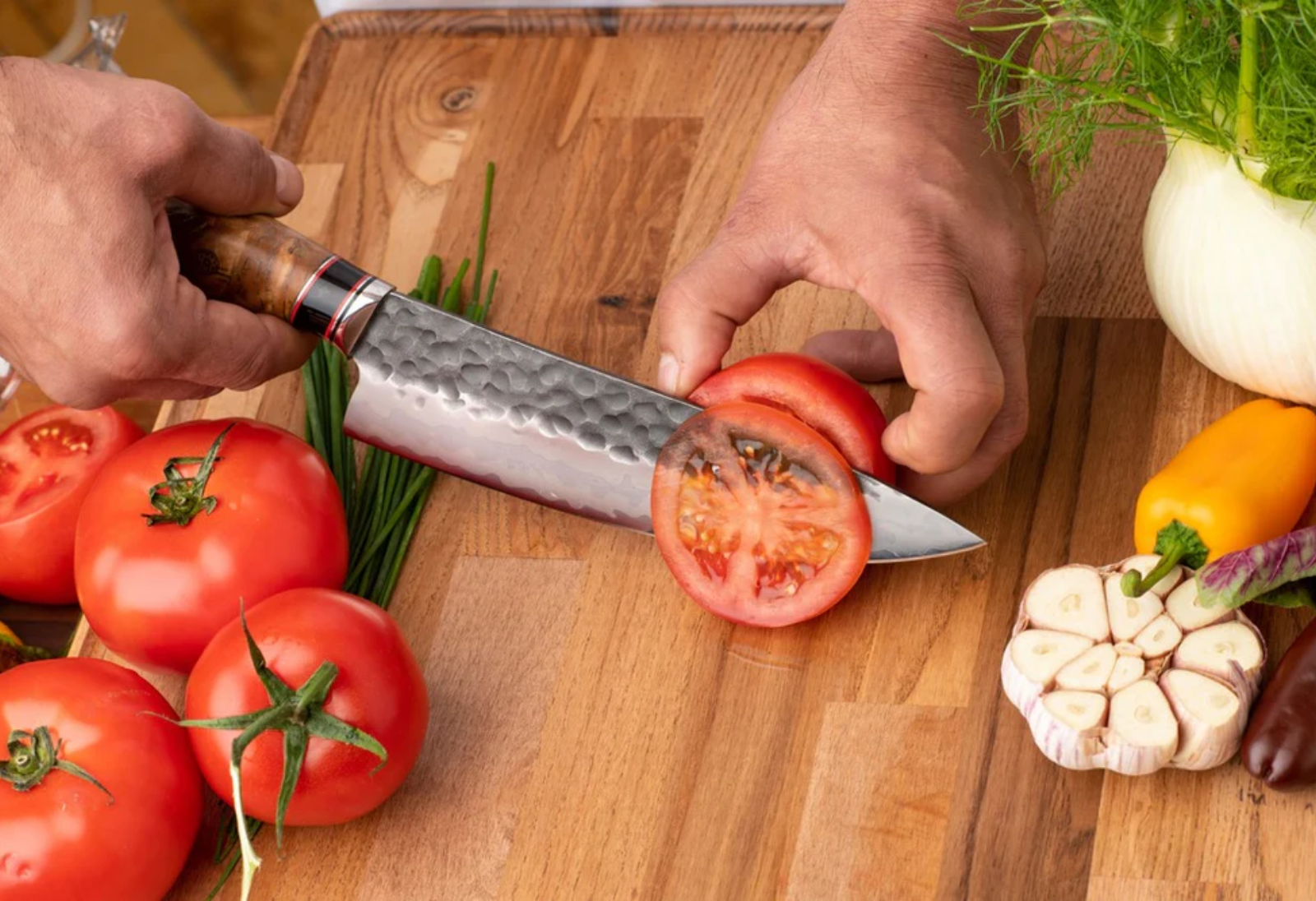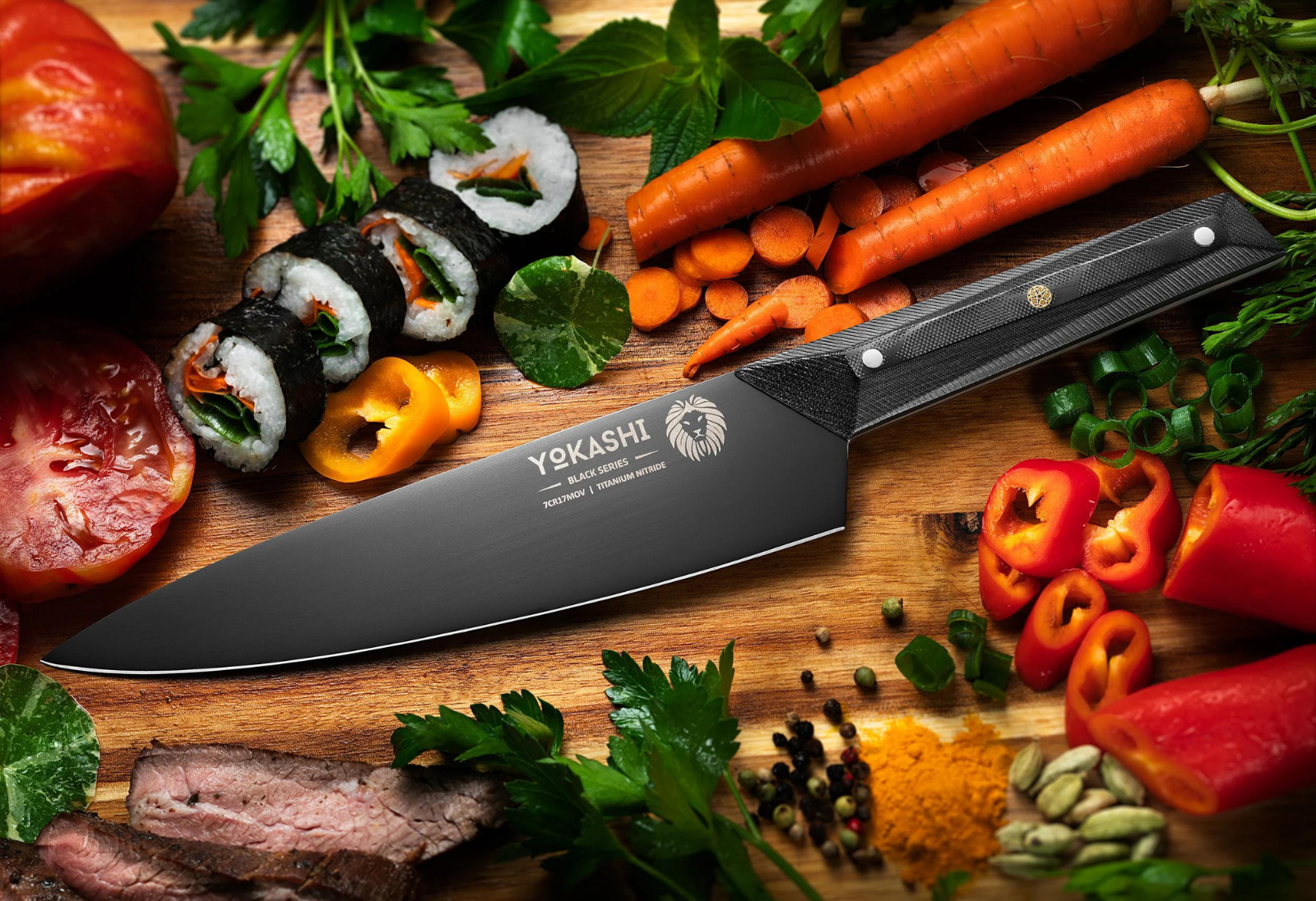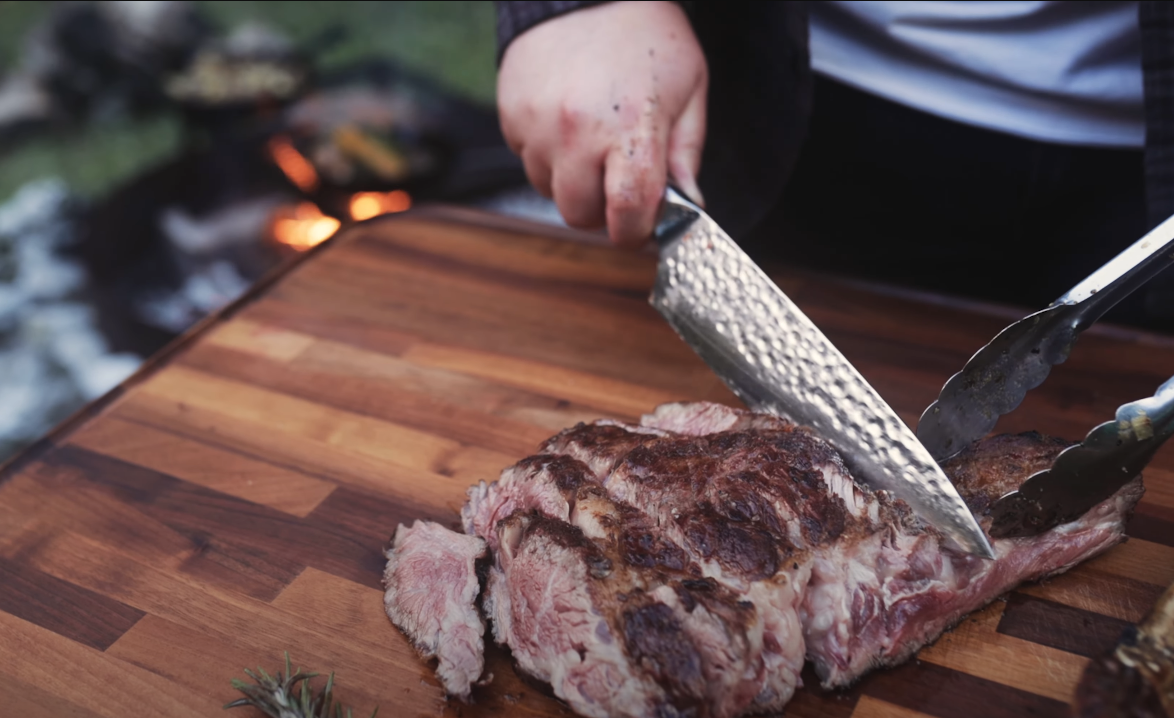
Caring for Your Japanese Knife: Maintenance Tips and Tricks
Japanese knives are renowned for their precision, craftsmanship, and unique qualities, which make them stand out in any kitchen. Proper care and maintenance are essential to ensure that your knife remains in peak condition and continues to boost your culinary creations. Here’s a comprehensive guide to keeping your Yokashi Japanese knife in top shape, covering sharpening techniques, storage solutions, and cleaning tips.
Introduction to Japanese Knives
Japanese knives are a testament to centuries of craftsmanship and dedication. Rooted in the ancient art of swordsmithing, these knives are celebrated for their sharpness, durability, and the finesse they bring to food preparation. At Yokashi Knives, our commitment to quality reflects this rich tradition, blending aesthetic design with functional excellence.
Understanding Your Yokashi Knife

Before diving into maintenance, it's crucial to understand the specifics of your Yokashi knife:
Black Series: This series features high-carbon Super Steel with a Black Titanium Nitride coating, combining strength with a stylish design.
Classic Series: Made from 67 layers of VG-10 Super Steel, these knives offer exceptional sharpness and rust resistance.
Okami Knife: Hand-forged from 7-layer Damascus 440C steel, the Okami knife is known for its superior sharpness and ergonomic maple wood and resin handle.
Dragon Series: Crafted from 67 layers of Damascus high carbon steel, the Dragon series combines precision with a full-tang design for balanced performance.
Excalibur Series: Made from imported German steel with a Rockwell Hardness of 58+/- HRC, these knives offer excellent durability and sharpness.
For Daily Care and Cleaning
To preserve the quality and longevity of your Yokashi knife:
- Hand Wash Only: Use a mild detergent and a soft sponge to clean your knife immediately after use. Avoid harsh chemicals and abrasive sponges.
- Dry Thoroughly: Wipe the knife with a clean, dry cloth right after washing. This prevents water spots and rust formation.
- Cutting Surface: Use a wooden or bamboo cutting board. Hard surfaces like glass or marble can dull the blade and cause chipping.
- Avoid Soaking: Never leave your knife soaking in water, as prolonged exposure can lead to rust and deterioration.
- Knife Blocks and Magnetic Strips: Store your knife in a designated knife block or on a magnetic strip. This prevents accidental damage and ensures easy access.
- Protective Sheaths: Use blade guards or sheaths if you store your knife in a drawer. This prevents the edge from coming into contact with other utensils.
Sharpening Your Knife
Keeping your Japanese knife sharp is crucial for maintaining its performance and safety. Yokashi knives, known for their exceptional sharpness, require regular honing to stay in top condition.
- Choosing the Right Sharpening Stone
- Coarse Stone (Ara-to): Use this to repair damage or set a new bevel angle. Its grit range is 120 to 600.
- Medium Stone (Naka-to): Ideal for regular maintenance, with a grit range of 1000 to 1500.
- Finishing Stone (Shiage-to): For polishing and refining the blade edge, with a grit of 3000 and above.
- Sharpening Technique
- Preparation: Soak the whetstone in water for 10-15 minutes. Lay a damp cloth under the stone to prevent slipping.
- Angle and Pressure: Hold the knife at a 10-15 degree angle against the stone. Apply light pressure and move the knife from base to tip, ensuring even sharpening. Repeat on both sides of the blade.
- Honing: After sharpening, wash and dry the knife. Regular honing maintains the edge between more intense sharpening sessions.
- Honing Frequency
- Regular Use: Sharpen your knife every few weeks for daily maintenance. If it shows signs of dullness or damage, sharpen it more frequently.
Rust Prevention and Removal
Japanese knives are prone to rust if not properly maintained. Here’s how to prevent and handle rust:
- Preventing Rust
- Immediate Drying: Always dry your knife thoroughly after washing.
- Oil Application: For long-term storage, apply a thin camellia or olive oil layer to the blade. This creates a protective barrier against moisture.
- Rust Removal
- Light Rust: Use a non-abrasive cloth or sponge to remove light rust gently.
- Heavy Rust: Use steel wool or a rust eraser, applying knife maintenance oil beforehand for more severe rust.
Final Tips for Knife Care
-
Avoid Extreme Temperatures: Do not expose your knife to extreme heat or cold.
-
No Dishwashers: Never place your knife in a dishwasher. The high temperatures and harsh detergents can damage the blade and handle.
-
Safe Handling: Always handle your knife with care and store it out of reach of children.
Key Takeaways for your Knife Maintenance
Your Yokashi knife is more than just a kitchen tool; it’s a piece of craftsmanship that deserves respect and proper care. By following these maintenance tips, you’ll ensure that your knife remains a reliable and sharp companion for years to come, enhancing your cooking experience with every use.


